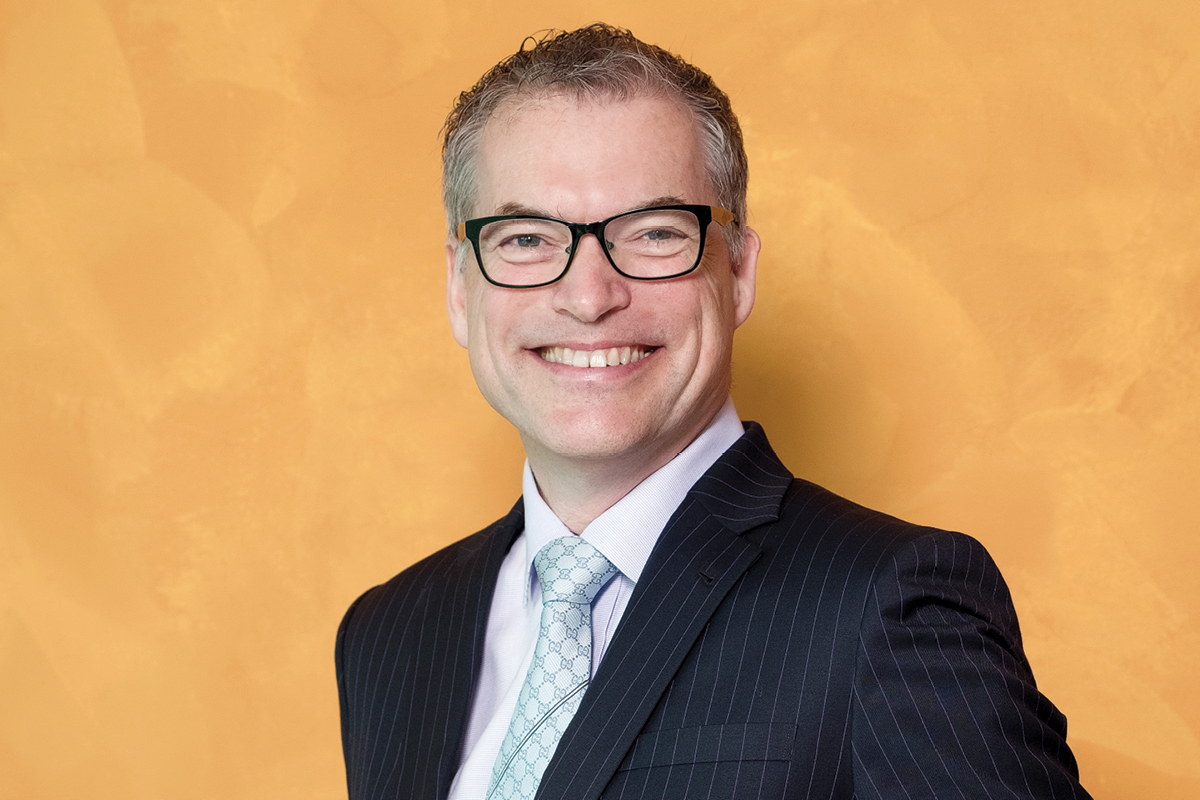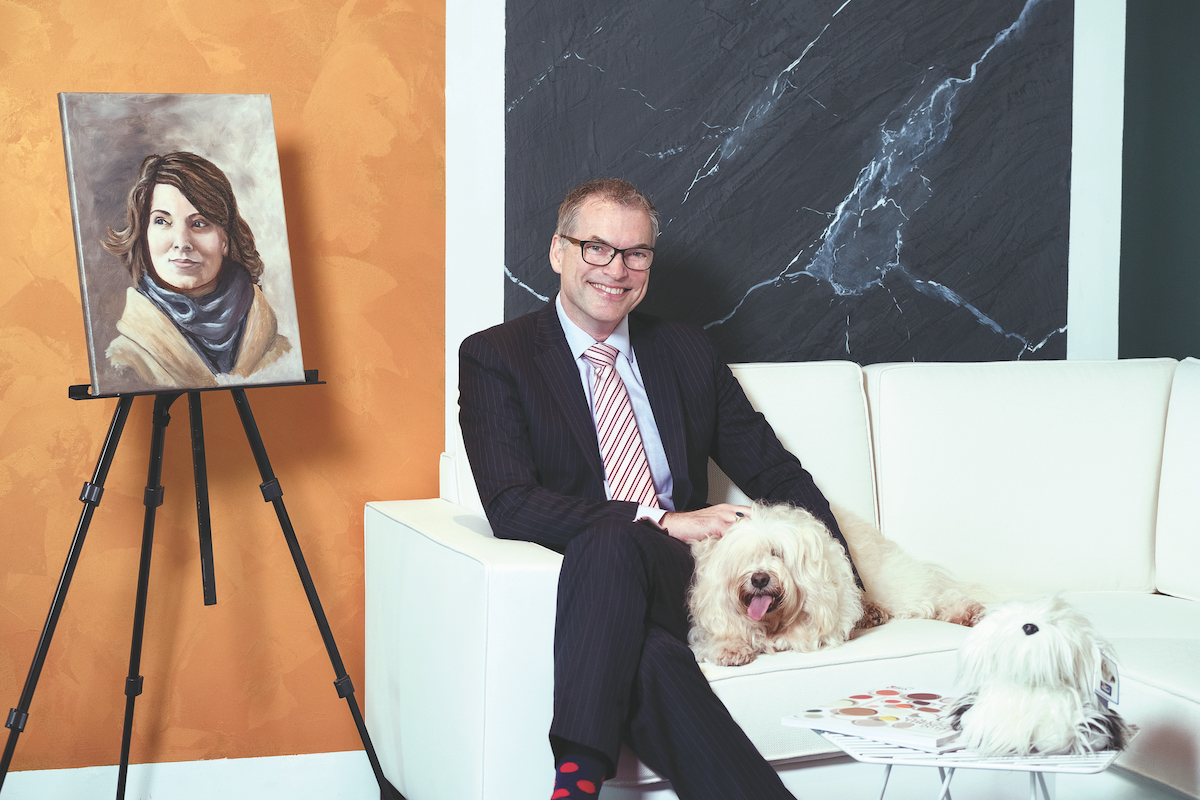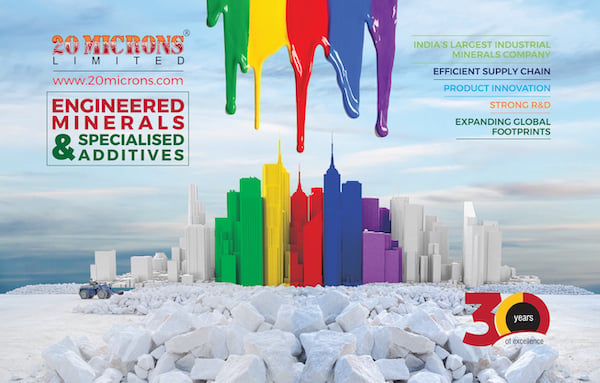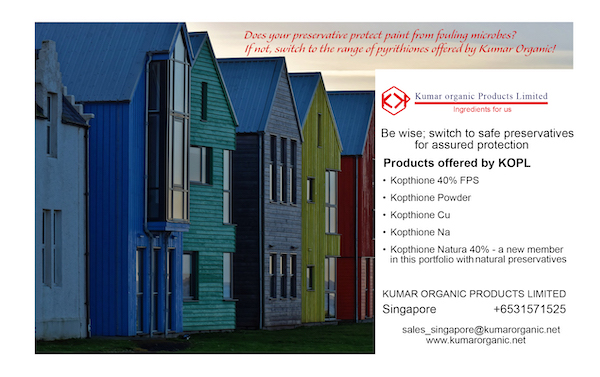When is watching paint dry exciting? When it’s viewed through the eyes of Oscar Wezenbeek. He’s the Managing Director of AkzoNobel Decorative Paints for South-East and South Asia and is as passionate about his product today as the day he joined the company three decades ago.

“If it drives, floats or flies, we cover it,” he enthuses. “Even the mobile phone you’ve got in your hands is probably coated by us. We provide the whole spectrum, from the regular paints consumers require to decorate their homes, to the high-performance coatings to protect sensitive equipment.
“If it drives, floats or flies, we cover it.”
“We’re the market leaders in coating aeroplanes,” Oscar adds. “Imagine an aeroplane taking off in tropical weather here in Singapore and within a matter of minutes it flies all the way up to 9,000 metres where it’s cold, or maybe even hailing. The metal is expanding and shrinking as it passes through all those extremes, so you need a durable paint that can withstand all these varying conditions within a short period.”
When not flying the skies, AkzoNobel’s paints are coating Singapore’s Burkill Hall, Sydney’s Harbour Bridge, Malacca’s Stadthuys, Milan’s La Scala, The New York Times Building, the London Eye and the world’s largest ferris wheel, still under construction, the Dubai Eye.
On the road, from F1 tracks to the suburbs, cars are powder-coated by AkzoNobel, while on the water, when not adding the colourful sparkle to yachts, the company is applying revolutionary antifouling technology to their hulls.
“Fouling growing on the hull causes boats to lose speed and fuel,” he explains.
Paint is largely taken for granted; we see it, appreciate it, but don’t spend a lot of time thinking about it. AkzoNobel is built on nearly 50 brands, household names including Dulux, Sikkens, International, Nautical and Polyfilla, having evolved from a long history of mergers and divestments.
It’s headquartered in Amsterdam, not far from where AkzoNobel rejuvenated the Rijksmuseum, and was founded in 1792 as a paint factory further north in Groningen, by Wiert Sikkens.
“We come from a lot of different heritages; even I’m a dinosaur by now with the company,” Oscar laughs. “But it’s a fantastic product and I’ve had the good fortune to be able to move around within the company, exploring different businesses and disciplines, so it’s always exciting to me.”
Oscar moved to Singapore with his wife and two children five years ago, having served in multiple senior roles in AkzoNobel offices in Spain, Sweden and Amsterdam, and collecting numerous qualifications in business, management and accounting along the way to add to his degree in industrial engineering.

“My wife was also an industrial engineer, but more inclined to enter into consultancy, whereas I always wanted to work for a company where I could touch the product, identify with something tangible, go into the factory,” he explains.
“I did my internship with AkzoNobel and got a job with them after finishing my national service. I looked forward to being able to stretch my wings, get to know different cultures, travel the world and deal with all the many interesting challenges and new technologies the industry provided. It was the perfect fit for me.”
Reflecting over his years at AkzoNobel, Oscar says it was also the company’s culture which attracted him to the business, an incentive which has kept him there since.
“It was inclusive – your opinion mattered, even when I was an intern,” he remembers. “We still have those core values. People take pride in the product, making sure a lot is invested in research and development, so we can give a quality solution to customers who want a different paint, a different colour or different properties. We take that to heart.”
AkzoNobel spends an average of €250 million (US$280 million) a year in R&D, or €1.25 billion (US$1.4 million) in the past five years, employing more than 3,000 scientists and technologists in 130 laboratories worldwide.
There’s a strong emphasis on sustainability, something Oscar is proud of. He is involved in ADB-DutchCham’s Sustainable Business Committee and AkzoNobel is a member of the World Green Building Council in Asia.
“Working with green building councils ensures that paint, while still giving lasting, optimal protection to buildings, creates a cleaner, more resource-efficient environment. Already 40% of the energy we use in our factories comes from renewable sources,” he says.
AkzoNobel was also the first major paint company to remove lead-based pigments from paint and drying agents. Its Dulux Weathershield Powerflexx reflects the heat of the sun, another product absorbs pollutants from within the house, while a powder being developed will include antibacterial properties to protect patients and staff from infections.
“This is quite revolutionary, offering beautification and protection, with extra functionality,” Oscar enthuses. It has been a fantastic ride so far and there’s still far to go.”
Proudly supported by:




